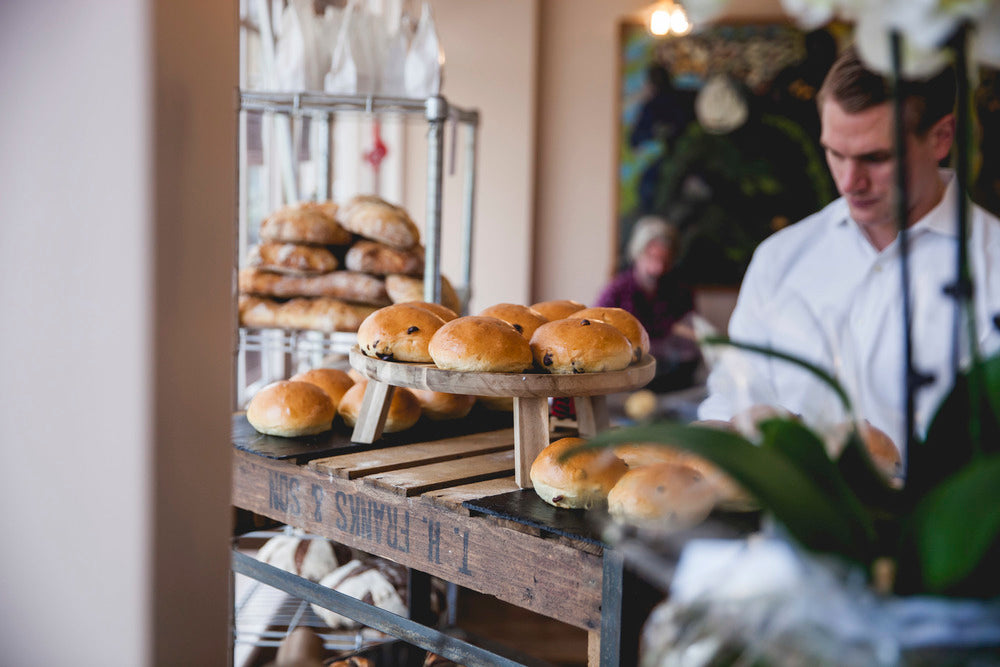Pastries: A Different Perspective

Are we sure about pastries occupying the prime cafe real estate which is the serving counter? Should they be evicted or should we innovate?
“In the vast majority of markets demand precedes supply. Without data to prove otherwise, therefore, the abundance of pastries is itself evidence to suggest that perhaps it would be unwise to ‘evict’ them altogether.”
Pastries exist because they fulfil a need. If there was no demand from consumers there would be no supply from cafes because that is how markets work. The first question, therefore, is could another category of products fulfil this need better?
The truth is we can’t know. Without quantifiable insight into the need states and values of consumers it can’t definitively be concluded either way. We do know though that pastries are ubiquitous in cafes spanning every segment of the coffee industry and that in the vast majority of markets demand precedes supply. Without data to prove otherwise, therefore, the abundance of pastries is itself evidence to suggest that perhaps it would be unwise to 'evict' them altogether.

What does the consumer need?
A need sate is defined by a group of consumers who seek similar product benefits and attributes. They are also generally transient. This means different consumers can be motivated to buy for different reasons. For example a person might ‘need’ a complete fine dining experience to celebrate a special occasion. The same person in a different circumstance might ‘need’ something quick to eat on their way to meet their friends for an evening out.
“Our own hierarchy of values when it comes to pastries can’t necessarily be applied to consumers."
As coffee industry professionals, we may likely make buying decisions which skew towards a preference for taste and variety so it can be difficult to appreciate how pastries which can occasionally offer little variance could fulfil a different set of needs for consumers. We need only look, however, at those who view coffee as a homogenous commodity yet drink copious amounts as evidence that this is possible.
Our own hierarchy of values when it comes to pastries can’t necessarily be applied to consumers. Perhaps, 'evolved snacking' on familiar, fast, cheap replacements for an oft forgot breakfast is precisely which need is being sought by consumers. Again, without the data it’s hard to say.
Read an interview with cook, Magnus Reid, on the role of food in creating value for both guest and the cafe.

Make it with butter but make it better
Varying consumer needs doesn't necessarily mean that your pastry offering is contributing everything it could to your business though. If your pastry offering is returning a low Gross Profit percentage and guests are sensitive to an increase in price then it could potentially be made more efficient.
Efficiency doesn't just mean cheaper. It means being 'better' at fulfilling the needs of the consumer. The aim then is finding the balance where the greatest value is being created to fulfil the needs of the consumer while maintaining the best possible GP for the business (consumers generally buy what they perceive to be the most valuable option).
Reducing the cost of pastries by sourcing at a cheaper unit cost might be one way to increase GP for example but it’s still not the most efficient outcome because it neglects one half of the equation, which is the consumer. Obviously, without insight to define precisely what is valuable to consumers, this can be difficult but we can still improve.
“Ultimately we should look for a solution which both increases value and increases GP. This means exploring product innovation guided by insight into the values of consumers”
To take a simplified* example, let’s assume the perceived value of a croissant to a consumer is £2, which bought at a cost of £1.3 to a cafe leaves a GP of only 35%. Now, we can increase the quality of the croissant or we can decrease the cost of the croissant for the business but neither will dramatically increase efficiency. Ultimately we should look for a solution which both increases value and increases GP. This means exploring product innovation guided by insight into the values of consumers to find the ‘magic combination.'

While we might not know everything about consumers it doesn't mean we know nothing. Being that they frequent an independent coffee shop rather than a chain, it might be safe to assume they have a higher than average interest in coffee. We also know that they value the flavour combination of coffee and pastries due to their spending behaviour. Informed by this, we might, for example, explore making our croissants with Coffee Chaff Butter, and if executed well, could expect the perceived value of our new product to increase.
If the perceived value of a Coffee Chaff Butter Croissant rises to £2.5 and, as chaff is a waste product from roasted coffee, production costs haven’t significantly increased, then both consumer value and GP have risen making our croissants more efficient.
Alternatively, ‘made by hand’ has been applied successfully to increase the value of products across many markets all over the world. Resources permitting, we could expect a similar increase in value, GP and efficiency were pastries to be produced, by hand, on site.
In the current climate of increasing saturation and unfavourable external conditions, now if ever, is the time to explore innovation and increase efficiency. Anything that makes an independent cafe more efficient is good because, ultimately it means, that independent cafe is more competitive against the chains (although this is the subject of further and separate discussion to follow).




